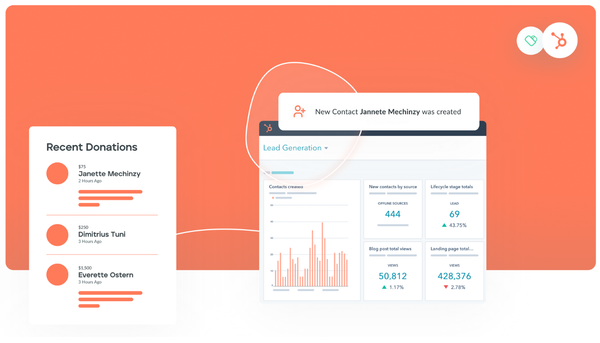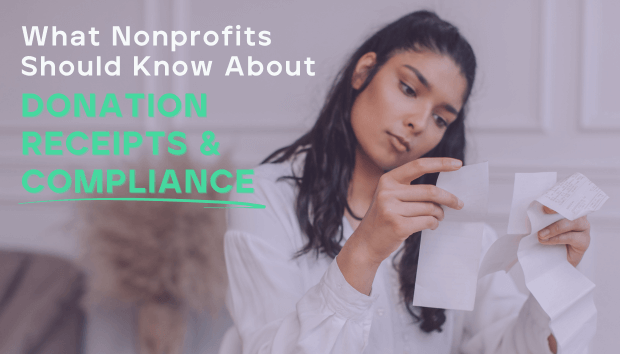Email Marketing Strategy: Getting the Fundamentals Right

Email marketing is one of the oldest, and still one of the most effective marketing and engagement channels any organization can use to get their message in front of their audience. Whether it’s a nonprofit promoting upcoming events or online courses, charities running a new online fundraising campaign, or an advocacy group seeking petitions and engagement on an urgent issue, email continues to drive results.
In fact, across the board, email drives an ROI of 4400%, roughly 4x higher than any digital marketing medium.
Because of its pervasiveness and impact there are already a lot of great articles, videos, and podcasts about how you can increase your email’s ROI with the latest tips and tricks. Those are all great, and things like embedding GIFs in an email, embedding videos in email, using emoji’s in subject lines, or using a conversational tone in your messaging, are all fantastic pieces of advice that will in fact move the needle.
However, as a result of all this new content, many organizations often forget about the fundamentals when it comes to emailing. It’s maybe not as sexy or fun as some of the new trends but without taking a hard look at your fundamentals, none of that matters. This article will focus on how and why to keep your contact lists clean, how to increase deliverability, and how to use segmentation to drive engagement and impact.
Clean Contact Lists
It’s easy to get excited when you see your contact lists soar from 0 to 100 to 1000 to 100,000 contacts, all representing a new opportunity to spread your message or raise money. Exercising a little caution would be wise here to ensure that the contacts you are bringing into your list are actually a quality list of active users. There are three potential groups of contacts that you will get on an online subscription form, and it’s important to know who is who:
1) The Active Community Member: These are your dream contacts. Perhaps they went to an event you spoke at, loved everything they saw, signed up on your website and cannot wait to hear from you so they can share your news, donate to your campaigns, and help you grow. Keep these people around, and make sure they feel special (more on this below).
2) The Random Observer: These are people that happen to sign up to your newsletter perhaps because at one point they thought they wanted to be involved but have since moved on, or maybe they downloaded a report or a video from you and provided their email address to do so. There could be some diamonds in the rough here and it’s important to try to find them, but for the most part they will not become active community members, and in fact they may even start ignoring your emails, unsubscribing, or worse of all marking them as spam. Nurture the engaged ones, and tread lightly with others.
3) The Bot: Okay, maybe it won’t be a bot but a huge number of email signups are often fake emails or closed down emails, and sometimes spam traps designed by internet service providers (ISPs) to flag spammers and block their emails. If you have too many of these addresses in your list, many of your emails will be immediately bounce, be blocked, or marked as spam which will hurt your chances of landing in the inboxes of your Active Community Members. Rid yourself of these contacts at all times.
Stay on top of your list by monitoring sending stats like spam, bounces, and blocks and make sure to remove those emails that are causing the infractions. Similarly, some tools like Mailjet’s Segmentation Tool allows you to send emails only to those contacts who are most engaged so that your sending stats are truly incredible and will be rewarded by ISPs.
For instance, you could segment out your list so that you send only to those who have opened your email in the last 6 months. You could then send a separate campaign to those who haven’t opened an email in a few months asking if they still want to hear from you. If no - then move on, stop wasting time, money, and your sender reputation on The Bots.
Let’s Dig A Little Deeper Into Segmentation & Personalization
There is so much more that can be done with segmentation, and it’s not only one of the most overlooked email marketing tactics today (as reported by email marketers themselves), but it is especially overlooked by nonprofits and charities who consider it to be a resource-intensive tactics.
To do it perfectly will take time, but to start small with segmentation is easy.
To take advantage of segmentation, first take a look at your contact lists. What data do you know about your audience? If all you have is their email address, you should be looking to bolster your data to better understand where your contacts live, what content they engage with most, why they signed up, and so forth.
Once you have a little more data on them, you can start to experiment with some tactics to increase engagement, and drive more results for your organization.
Let’s take just one example - fundraising via email for your nonprofit or charity. When you go out and try to fundraise door to door or at events I imagine you are not using the exact same message, pitch, and ask in every single interaction. You adapt to the context - whether they are long-time donors, well-known philanthropists, recent college graduates, volunteers in your organization and so forth. The same logic applies to your email audience. There’s nothing that will make a recipient close an email or even unsubscribe faster than an ask that simply doesn’t resonate.
If you know even one thing about your audience beyond their name, you can start to use it to segment and personalize your emails campaigns. For instance, do you know what city they live in and whether they have donated in the past? If so, you can create a custom segment of, for example past donors in New York City and a separate segment for non-donors in San Francisco.
The New York email can be sent at 9am EST, include a video of the amazing work that they have supported in the past, and a button to easily increase their donation by $5/month now.
The San Francisco email can be sent at 9am PST, with imagery of the work being done or perhaps an upcoming event in California alongside a personal message from the Executive Director asking for a $1/month donation.
Furthermore, you can segment based on whether your contacts opened your last email, whether they clicked a link, and so forth. It’s no secret that personalization matters in today’s marketing world, and if you’re not segmenting and personalizing your emails, you are missing out. (Shameless self-plug for Mailjet’s Segmentation features which can help get you started. P.s. we offer a discount to nonprofit customers).
Once you’ve cleaned your lists, increased the chance of landing in the inbox, segmenting and personalization your emails to ensure they resonate, you can start experimenting much more with your email campaigns. But unless you have the foundation right, you are likely not going to have a significant impact on increasing your impact.
Be sure to check out Mailjet’s blog for more tips, tricks, and features here, and if you sign up for an account be sure to apply for our nonprofit program to receive 20% off.
Author Bio
 Miles DePaul is the Marketing Manager for Mailjet North America. Feel free to pull him aside to talk about podcasts, film, branding, and his beloved Leafs anytime.
Miles DePaul is the Marketing Manager for Mailjet North America. Feel free to pull him aside to talk about podcasts, film, branding, and his beloved Leafs anytime.





